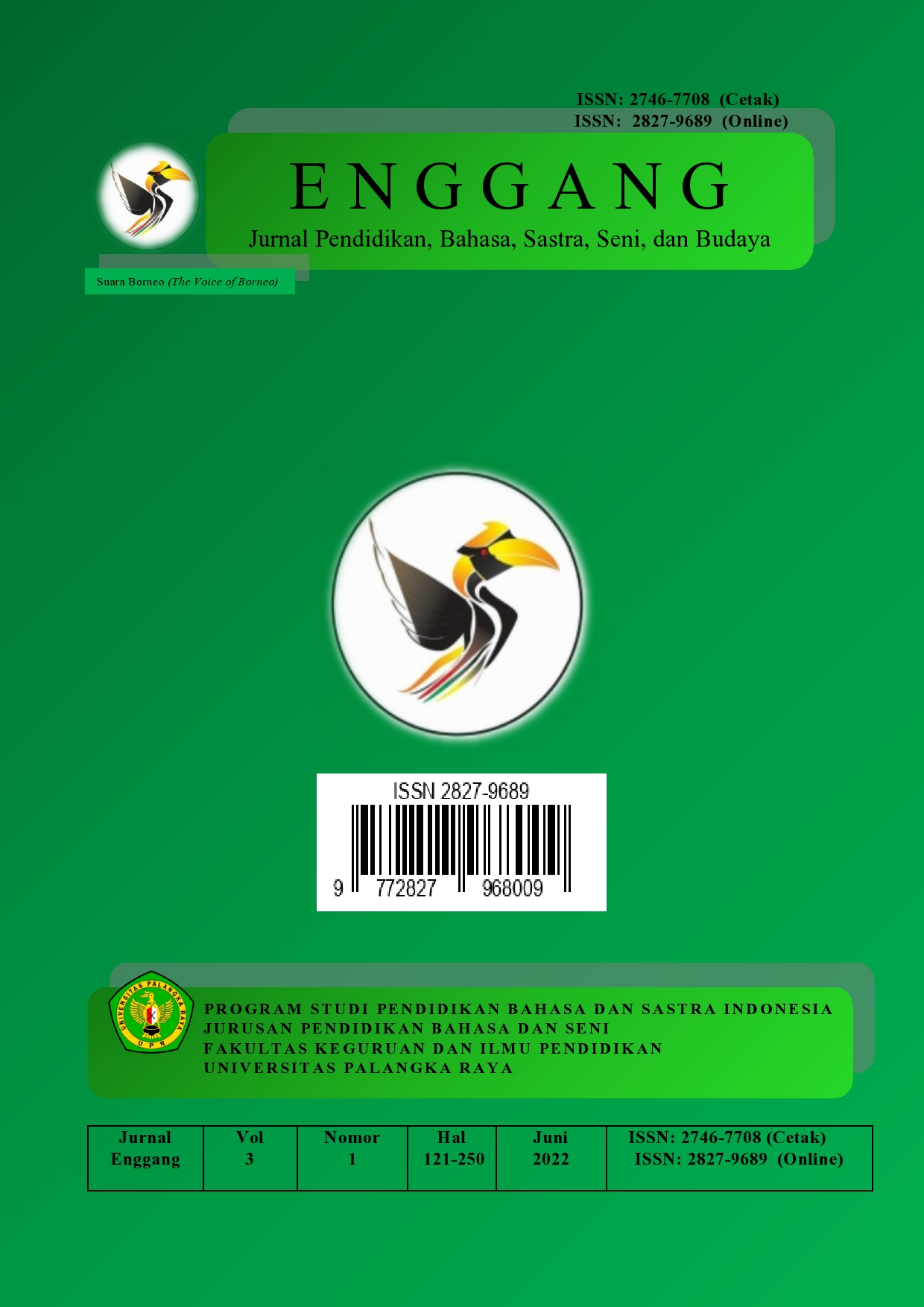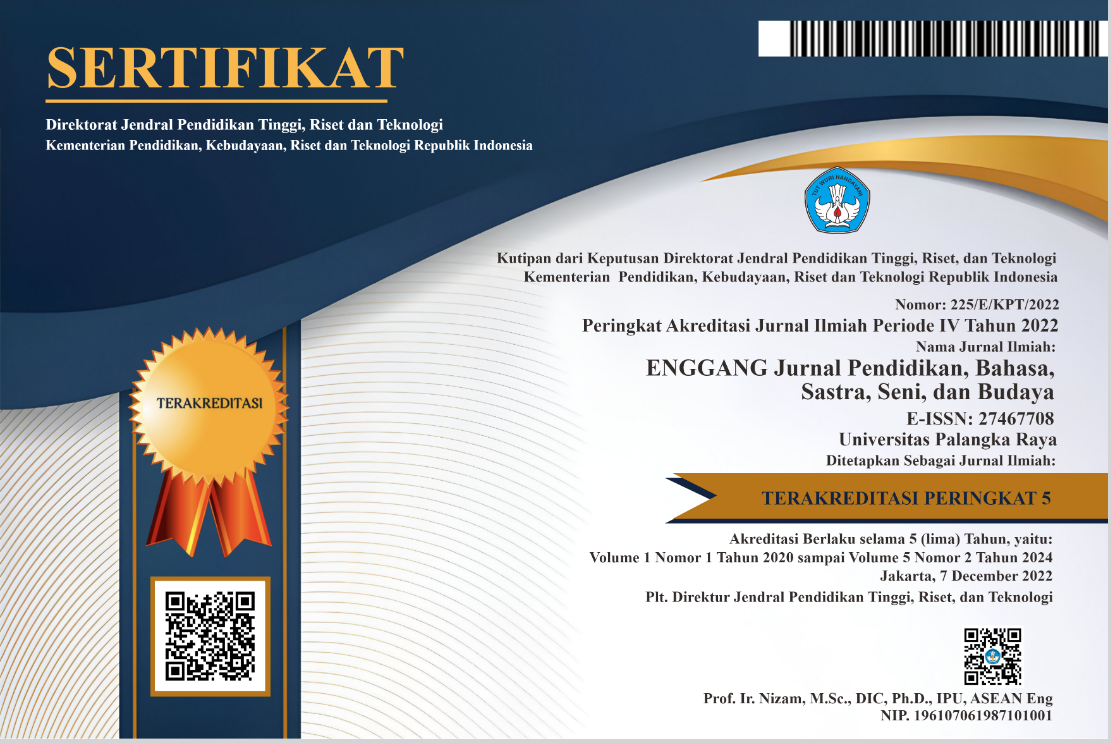Designing Sample of Teaching Reading Recount Text Module by using Experience-Text-Relationship (ETR) for Lower Secondary Students
DOI:
https://doi.org/10.37304/enggang.v5i2.22305Keywords:
Reading, Recount Text, Experience Text RelationshipAbstract
This research was aimed at providing a media for teaching reading recount text of eighth-grade students by using the Experience-Text-Relationship (ETR) method. This research was categorized as research and development. This research used three phases of ADDIE, namely Analyze, Design, and Develop. First, this research aims to analyze the 2013 Curriculum, the students’ needs, and the appropriate materials. Second, the research aims to design modules with the Experience-Text-Relationship (ETR) method that can enhance the students’ reading ability. Third, this research is to develop the prototype, especially material design. The tool of data collecting is an interview sheet for English teacher, it used to be the data of students’ problems in class. Data analysis used descriptive qualitative analysis. This research provided results that students and teachers need modules that are able to improve reading skills in teaching-learning. This research concludes that the designing example of teaching reading recount text by using the Experience-Text-Relationship (ETR) method to increases students’ reading skills, allow the students to attempt to achieve reading goals, and increases their interest in studying English.
References
Anderson, M., & Anderson, K. (1998). Text types in English 3. Macmillan Education Australia.
Au, K. (1979). Using the Experience-Text-Relationship method with minority children. The Reading Teacher.
Beard, C., & Wilson, J. P. (2006). Experiential learning. London and Philadelphia, USA: Kogan Page.
Branch, R. M. (2009). Instructional design: The ADDIE approach. New York: Springer.
Brassell, D., & Rasinski, T. (2008). Comprehension that works: Taking students beyond ordinary understanding to deep comprehension. Huntington Beach: Shell Education.
Brown, H. D. (2001). Teaching by principles: An interactive approach to language pedagogy (2nd ed.). San Francisco: Addison Wesley Longman, Inc.
Dewey, J. (1997). Experience & education. New York: Kappa Delta Pi.
Grabe, W. (2009). Reading in a second language: Moving from theory to practice. New York: Cambridge University Press.
Grabe, W., & Stoller, F. L. (2011). Teaching and researching reading (2nd ed.). New York: Pearson Education Limited.
Graves, K. (2000). Designing language courses: A guide for teachers. Boston: Heinle & Heinle Publishers.
Howard, J., & Major, J. (2004). Guidelines for designing effective English language teaching material. TESOLANZ Journal, 12, 101–107.
Kolb, D. A. (2015). Experiential learning: Experience as the source of learning and development (2nd ed.). United States of America: Pearson Education, Inc.
Mason, J. M., & Au, K. H. (1990). Reading instruction for today (2nd ed.). United States of America: Harper Collins Publishers.
Nation, I. S. P. (2008). Teaching ESL/EFL reading and writing. New York: Routledge, Taylor & Francis.
Núñez, I. D., & Bodegas. (2007). From syllabus to curriculum design: Stages for designing a curriculum. Quintana Roo, Mexico: University of Quintana Roo – Department of Language and Education.
Reynolds, M., & Vince, R. (Eds.). (2007). The handbook of experiential learning and management education. New York: Oxford University Press Inc.
Tomlinson, B. (2008). English language learning materials: A critical review. London: Continuum International Publishing Group.
Tomlinson, B. (2011). Materials development in language teaching (2nd ed.). UK: Cambridge University Press.












